In the vast tapestry of the natural world, few creatures evoke such a potent mix of fascination and apprehension as the spider. Among them, the Brown Recluse, scientifically known as Loxosceles reclusa, stands out as a particularly enigmatic figure. Often shrouded in myth and misconception, this arachnid is far more than just its infamous bite. It is a creature of remarkable adaptations, a silent hunter, and a vital thread in the ecological fabric of its native lands. Join us as we delve into the hidden world of the Brown Recluse, separating fact from fiction and uncovering the intricate life of this often misunderstood “violin spider.”
Unmasking the Brown Recluse: Identification and Habitat
For many, the first encounter with a Brown Recluse is often one of surprise, sometimes even alarm. Accurate identification is crucial, not only for peace of mind but also for understanding its ecological role and potential interactions with humans. This spider is not a giant, nor is it overtly aggressive, but its distinct features and preferred dwelling places make it a creature worth knowing.
Physical Characteristics: The Violin Mark
The Brown Recluse is a relatively small spider, typically measuring about 6 to 20 millimeters (0.24 to 0.79 inches) in body length, with legs extending its overall diameter. Its coloration ranges from yellowish-tan to dark brown, often appearing quite uniform. The most distinctive and widely recognized feature, which gives it the common name “violin spider,” is a dark, violin-shaped marking on its cephalothorax (the fused head and thorax). The “neck” of the violin points towards the rear of the spider. However, it is important to note that this marking can be faint or absent in some individuals, and other harmless spiders can have similar patterns. A more reliable, though less visible, identification feature is its eye arrangement: most spiders have eight eyes arranged in various patterns, but the Brown Recluse, like other members of the Loxosceles genus, possesses six eyes arranged in three pairs (dyads) in a semicircle.
Other key characteristics include:
- Uniform Coloration: Unlike many spiders, the Brown Recluse lacks distinct stripes, bands, or complex patterns on its abdomen or legs.
- Fine Hairs: Its body and legs are covered in fine, short hairs, giving it a velvety appearance, rather than prominent spines.
- Legs: Its legs are slender and unbanded.
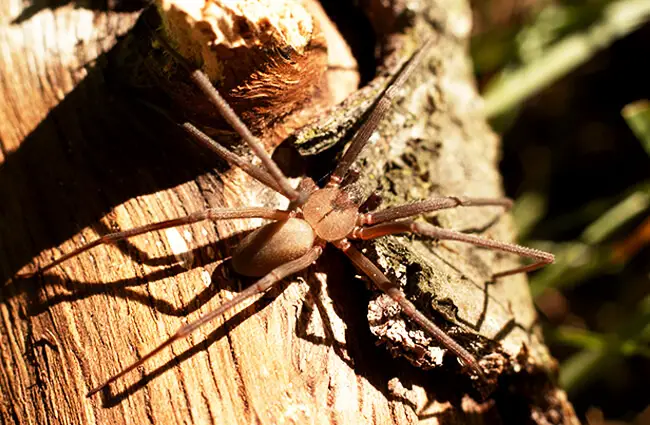
Where They Roam: Geographic Range and Preferred Habitats
The Brown Recluse is native to the central and south-central United States. Its core range extends from the southern Midwest states like Missouri, Kansas, and Oklahoma, eastward through Kentucky and Tennessee, and southward into parts of Texas, Arkansas, Louisiana, Mississippi, Alabama, and Georgia. Reports of Brown Recluses outside this established range are often misidentifications, as many other species of spiders are mistakenly identified as recluses.
These spiders are, as their name suggests, reclusive. They prefer secluded, undisturbed environments, making them masters of camouflage and stealth. In their natural habitats, they can be found:
- Under rocks and logs
- In woodpiles
- Underneath bark
- In caves
- Among leaf litter
However, Brown Recluses are also highly synanthropic, meaning they thrive in close association with human dwellings. This is where most human encounters occur. Within homes and buildings, they seek out dark, quiet, and undisturbed areas, often where clutter provides ample hiding spots. Common indoor habitats include:
- Closets and attics
- Basements and crawl spaces
- Behind furniture and appliances
- Inside seldom-used clothing, shoes, or bedding
- In cardboard boxes and storage containers
For the animal lover hoping to observe one in the wild, the best approach is to carefully and respectfully search in these undisturbed natural settings within their known geographic range. Turning over logs or rocks in wooded areas, particularly in drier conditions, might reveal one. Indoors, they are more likely to be found in cluttered, dark storage areas. Always exercise caution and avoid direct contact, as these spiders are not aggressive but will bite if they feel threatened or are accidentally pressed against skin.
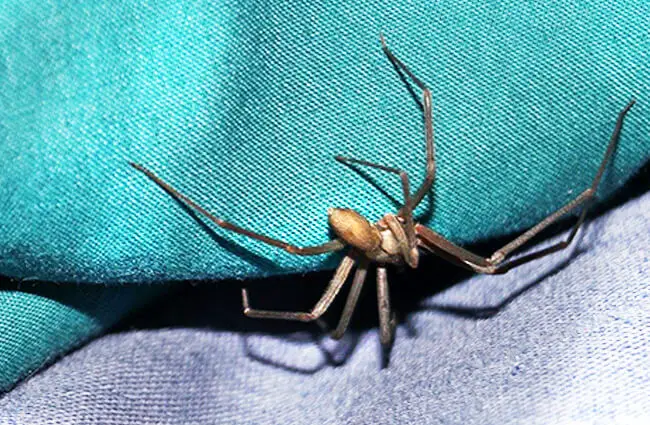
Life in the Shadows: Behavior and Ecology
The Brown Recluse’s life is a testament to quiet efficiency. It is a nocturnal hunter, largely unseen, yet constantly at work within its chosen environment. Understanding its behaviors provides insight into its survival strategies and its place in the ecosystem.
A Hunter’s Strategy: Diet and Predation
The Brown Recluse is primarily an insectivore, preying on a variety of small arthropods. Unlike many spiders that build elaborate webs to ensnare prey, the Brown Recluse is a “hunting spider.” It does spin small, irregular, and often messy webs, but these are typically used as retreats or resting places rather than for active hunting. Its hunting strategy involves actively foraging at night, using its keen senses to detect prey. Its diet typically includes:
- Small insects such as crickets, cockroaches, and moths
- Other small arthropods
- Occasionally, other spiders
Once prey is located, the Brown Recluse uses its venom to subdue it. The venom contains enzymes that help to break down the prey’s tissues, making it easier for the spider to consume. This efficient predation helps control populations of various insects, contributing to the balance of its local ecosystem.
The Reclusive Nature: Daily Habits
True to its name, the Brown Recluse is largely nocturnal and highly reclusive. During the day, it seeks refuge in dark, quiet, and undisturbed places. This behavior is a key survival mechanism, protecting it from predators and harsh environmental conditions. When disturbed, its first instinct is to flee and hide rather than confront. It is not an aggressive spider and will only bite if it feels trapped or directly threatened, such as when it is accidentally pressed against skin while a person is dressing or moving objects.
Spinning a Future: Mating and Reproduction
The reproductive cycle of the Brown Recluse is a fascinating aspect of its biology. Mating typically occurs from February to October, with a peak in June and July. The male spider approaches the female cautiously, often performing a courtship ritual involving leg tapping and vibrations to signal his intentions and avoid being mistaken for prey. After mating, the female produces egg sacs, usually containing between 20 to 50 eggs. These sacs are spherical, off-white, and about 7 to 11 millimeters (0.28 to 0.43 inches) in diameter. She typically attaches these sacs to a secluded surface within her retreat.
A single female can produce several egg sacs over a period of several months, sometimes up to five in her lifetime. The eggs hatch in about a month, and the spiderlings undergo several molts before reaching maturity, a process that can take up to a year. Brown Recluses have a relatively long lifespan for a spider, often living for two to four years, sometimes even longer in ideal conditions. This extended lifespan allows them to contribute significantly to their local insect control over time.

Evolutionary Journey of a Master Survivor
To truly appreciate the Brown Recluse, one must look back through the eons, tracing its lineage and understanding the evolutionary pressures that shaped its unique characteristics. Spiders, as a group, are ancient, and the family to which the Brown Recluse belongs has a long and successful history.
Ancient Lineage: The Sicariidae Family
The Brown Recluse belongs to the family Sicariidae, a group of spiders known for their potent venom and six-eyed arrangement. This family also includes the notorious six-eyed sand spiders (genus Sicarius) found in deserts of Africa and South America. The evolutionary history of Sicariidae dates back millions of years, with fossil records indicating their presence in the Cretaceous period. This long evolutionary journey has allowed them to develop highly specialized venom and survival strategies. The genus Loxosceles, which includes the Brown Recluse, is widespread globally, with species found in North and South America, Africa, and the Mediterranean. This broad distribution suggests a successful evolutionary radiation from an ancient common ancestor, adapting to diverse environments while retaining core characteristics like their reclusive nature and unique venom composition.
Adaptations for Survival
The Brown Recluse’s success is a testament to several key adaptations:
- Reclusive Behavior: Hiding in dark, undisturbed places minimizes exposure to predators and harsh environmental conditions.
- Nocturnal Activity: Hunting at night reduces competition and avoids diurnal predators.
- Efficient Venom: Their necrotic venom, while concerning to humans, is highly effective at subduing prey, allowing them to capture a wide range of insects.
- Cryptic Coloration: Their brown and tan hues provide excellent camouflage in their preferred habitats, blending seamlessly with soil, wood, and debris.
- Long Lifespan and Reproductive Strategy: Producing multiple egg sacs over a long lifespan increases the chances of successful reproduction and population maintenance.

The Brown Recluse and Its World: Ecosystem Interactions
Every creature, no matter how small or seemingly insignificant, plays a role in the intricate web of life. The Brown Recluse, despite its solitary nature, is an active participant in its ecosystem, contributing to the balance of nature in subtle yet important ways.
Role in the Food Web
As a predator, the Brown Recluse occupies a crucial niche in its food web. By preying on various insects and other small arthropods, it helps to regulate their populations. This natural pest control can be beneficial, especially in agricultural or garden settings where insect pests might otherwise proliferate unchecked. Its presence indicates a healthy, functioning ecosystem where a diverse array of invertebrates can thrive.
Predators and Prey
While the Brown Recluse is a predator, it is also prey for other animals. Its reclusive habits are a primary defense mechanism against creatures that might seek to make a meal of it. Natural predators of the Brown Recluse include:
- Other spiders: Larger, more aggressive spider species may prey on recluses.
- Centipedes: These fast-moving arthropods are formidable predators of spiders.
- Scorpions: In areas where their ranges overlap, scorpions can be predators.
- Birds: Some ground-dwelling birds might occasionally consume spiders.
- Lizards and small mammals: Certain reptiles and small insectivorous mammals may also prey on them.
Its contribution to the ecosystem is primarily as a mid-level predator, helping to transfer energy through the food chain and maintaining biodiversity by keeping insect populations in check.
Navigating Human Spaces: Interaction and Misconceptions
The most significant aspect of the Brown Recluse’s interaction with humans stems from its venomous bite. However, understanding the facts about these interactions is key to dispelling fear and promoting safe coexistence.
The Infamous Bite: Understanding the Venom
The Brown Recluse’s venom is necrotic, meaning it can cause tissue damage. The primary active component is an enzyme called sphingomyelinase D. A bite often goes unnoticed initially, as it is usually painless. Within a few hours, the bite area may become red, swollen, and tender. Over the next few days, a blister may form, and the affected tissue can break down, leading to an open sore or ulcer. This necrotic lesion can be slow to heal and, in some cases, may require medical intervention. However, it is crucial to understand that:
- Most bites are minor: The vast majority of Brown Recluse bites heal without significant complications, often resembling a common insect bite.
- Severe reactions are rare: While severe necrotic lesions can occur, they are uncommon. Factors like the amount of venom injected, the individual’s immune response, and the bite location can influence the severity.
- Misdiagnosis is common: Many skin lesions, including bacterial infections (like MRSA), fungal infections, and other spider bites, are frequently misdiagnosed as Brown Recluse bites. Definitive diagnosis requires identifying the spider.
What to do if bitten:
- Stay calm: Panicking can worsen the situation.
- Clean the area: Wash the bite thoroughly with soap and water.
- Apply a cold compress: This can help reduce swelling and pain.
- Elevate the limb: If the bite is on an arm or leg, elevate it to reduce swelling.
- Seek medical attention: It is always advisable to consult a doctor, especially if the bite area becomes increasingly painful, red, swollen, or if a lesion begins to develop. If possible and safe to do so, bring the spider (dead or alive) for positive identification.
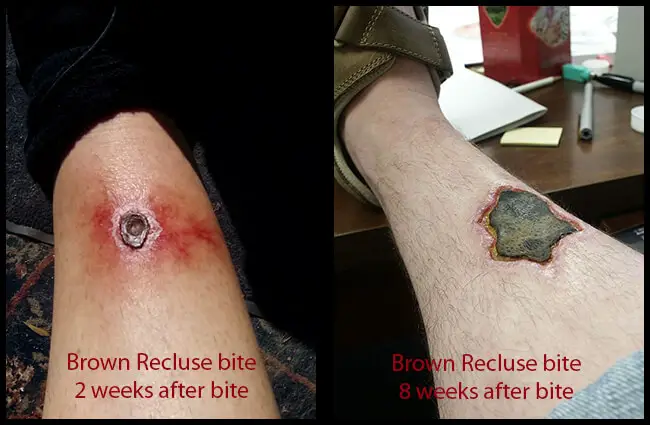
Coexisting with Brown Recluses: Prevention and Safety
Given their reclusive nature, preventing bites largely revolves around minimizing opportunities for accidental contact. For homeowners and hikers, these tips are invaluable:
- Reduce clutter: Keep basements, attics, closets, and storage areas tidy.
- Seal entry points: Seal cracks and crevices in foundations, walls, and around pipes to prevent entry.
- Shake out items: Before putting on clothes, shoes, or using towels that have been stored, shake them out vigorously.
- Inspect bedding: Check sheets and blankets before getting into bed, especially in areas where recluses are known to be present.
- Wear gloves: When working in woodpiles, sheds, or other undisturbed areas, wear thick gloves.
- Use sticky traps: Non-toxic sticky traps can be placed in corners and along baseboards to monitor and catch spiders.
- Educate yourself: Learn to identify the Brown Recluse accurately to avoid misidentification and unnecessary fear.
Cultural Footprint: Myths and Reality
The Brown Recluse has unfortunately become a figure of considerable fear and misinformation in popular culture. Sensationalized stories and misdiagnoses have fueled a widespread belief that these spiders are aggressive and their bites are always severely necrotic. This has led to an exaggerated perception of danger and often results in the unnecessary killing of harmless spiders. In reality, the Brown Recluse is a shy creature that prefers to avoid confrontation. Its contribution to human culture is largely through this lens of fear, but a more accurate understanding reveals a fascinating organism whose true impact is far less dramatic than often portrayed.
Caring for the Recluse: Insights for Zookeepers
For aspiring zoologists or zookeepers tasked with the care of Brown Recluse spiders, understanding their specific needs is paramount. Maintaining a healthy and safe environment for these fascinating arachnids requires attention to detail and respect for their natural behaviors.
Creating the Ideal Habitat
A captive Brown Recluse needs an enclosure that mimics its natural, reclusive environment. A small terrarium or plastic container with a secure, ventilated lid is suitable. Key elements include:
- Substrate: A layer of dry substrate such as peat moss, coco fiber, or vermiculite.
- Hiding spots: Crucial for their reclusive nature. Provide small pieces of bark, cork, or even crumpled paper towel rolls. These spiders thrive on clutter.
- Temperature: Maintain a stable temperature between 70-85°F (21-29°C).
- Humidity: Keep humidity relatively low, as they prefer dry conditions. A small water dish or occasional light misting of one corner of the enclosure is sufficient. Avoid overly damp conditions, which can lead to mold or mites.
Feeding and Hydration
Brown Recluses are not voracious eaters. They typically need to be fed once or twice a week. Appropriate prey items include:
- Small crickets
- Mealworms
- Small roaches
Prey size should be no larger than the spider’s abdomen. Remove any uneaten prey after 24 hours to prevent it from stressing the spider or introducing mold. A shallow water dish with a cotton ball or sponge to prevent drowning is essential for hydration, or a light misting of one side of the enclosure every few days can suffice.
Handling and Safety Protocols
When caring for a Brown Recluse, direct handling should be strictly avoided. These spiders are not pets in the traditional sense and are best observed from a distance. If relocation or maintenance is necessary:
- Use long forceps or a catch cup: Gently guide the spider into a container.
- Wear protective gloves: Thick, puncture-resistant gloves are recommended when working inside the enclosure.
- Work in a contained area: Perform enclosure maintenance over a tray or within another larger container to prevent accidental escape.
- Be aware of their speed: Despite their reclusive nature, they can move surprisingly quickly when startled.
Proper care ensures the well-being of the spider and the safety of the zookeeper, allowing for valuable study and appreciation of this unique species.
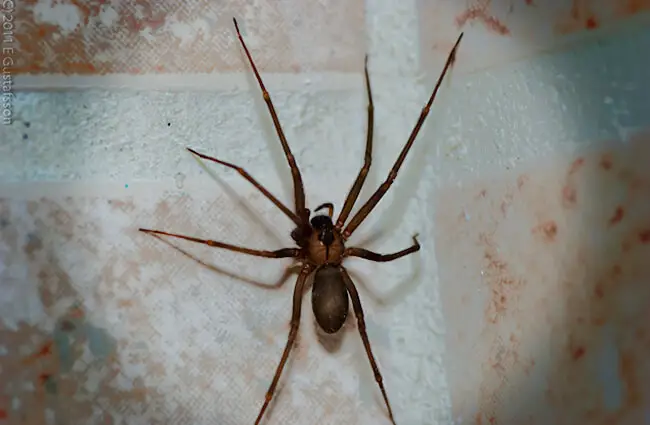
Fascinating Facts About the Brown Recluse
Beyond the headlines and fears, the Brown Recluse holds many intriguing secrets:
- Not a web builder: Unlike many spiders, its webs are not for catching prey but serve as retreats.
- Six eyes, not eight: A key identifier is its unique arrangement of six eyes in three pairs.
- “Recluse” is key: Its name perfectly describes its shy, hidden lifestyle.
- Long-lived: Can live for 2-4 years, sometimes longer, which is quite long for a spider.
- Not aggressive: Bites are almost always defensive, occurring when the spider is accidentally pressed against skin.
- Misdiagnosis epidemic: Many skin conditions are wrongly attributed to Brown Recluse bites, even outside its native range.
- Can survive long periods without food: Like many spiders, they are resilient and can endure weeks or months without a meal.
- Excellent camouflage: Their drab coloration helps them blend into their preferred cluttered, dark environments.
- Multiple egg sacs: A female can produce several egg sacs over her lifetime, ensuring reproductive success.
- Venom is unique: Contains sphingomyelinase D, an enzyme responsible for its necrotic effects, which is rare among spiders.
The Brown Recluse, with its quiet demeanor and distinctive violin mark, is a creature that truly embodies the marvels of natural adaptation. From its ancient lineage to its intricate role in the ecosystem, this spider is a testament to the diversity and resilience of life on Earth. By understanding its true nature, we can move beyond unwarranted fear and appreciate the Brown Recluse for the remarkable arachnid it is, a silent guardian of insect populations and a fascinating subject for scientific inquiry.

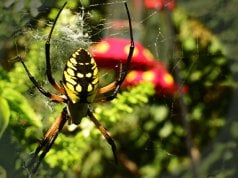



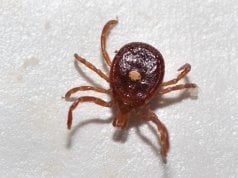
![Red Angus Closeup of a beautiful Red Angus cowPhoto by: U.S. Department of Agriculture [pubic domain]https://creativecommons.org/licenses/by/2.0/](https://animals.net/wp-content/uploads/2020/03/Red-Angus-4-100x75.jpg)

